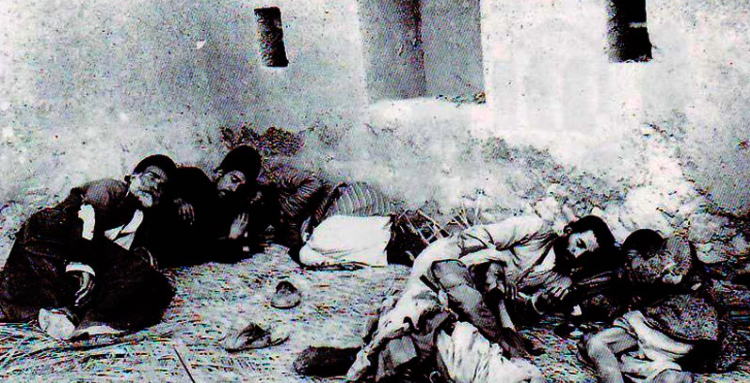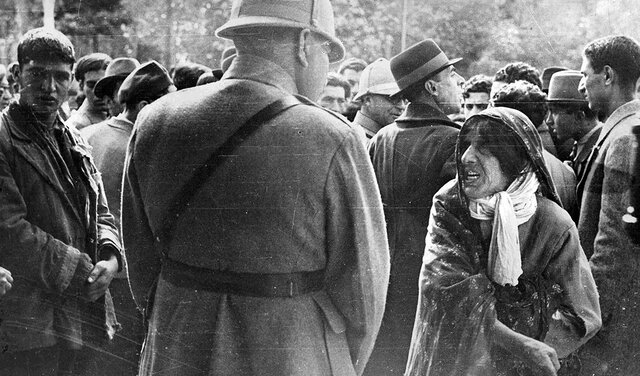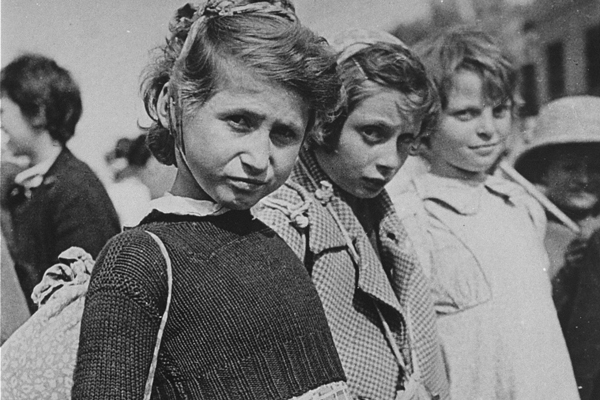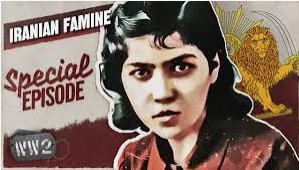Despite the vast focus of researchers on multiple facets of the history of World War Two, there remains a number of important events essentially ignored by mainstream scholarship. This state of affairs however is adaptively changing as a new generation of scholars are now focusing, in an unbiased manner, on events such as the famine that took place in Iran during the Second World War. Note that a famine had already occurred in Iran as a consequence of the First World War – for more on this topic see “The Unknown Great Famine and Genocide in Iran: 1917-1919” …

Undated photo of Iranian locals in an unidentified village or town suffering from famine during and right after World War One (Source: Pars Today article “8-10 million Iranians died over Great Famine caused by the British in 1910s”).
The video below “The Famine Everyone Forgot About – WW2 Special” was produced by the World War Two venue and premiered on July 22, 2022:
The above video narrated by Spartacus Olsson, provides the unknown history of the consequences to the civilian population of Iran, of the Anglo-Soviet invasion of Iran in August of 1941 and the subsequent occupation of the country until the end of World War Two (the Soviets actually withdrew from northwest Iran after the War in December 1946). The allied occupation of Iran and efforts to supply the Soviet Union’s war effort against Nazi Germany had a number of consequences for the Iranian population including:
- Commandeering the entire rail network of Iran by the occupying powers.
- Contracting half of Iran’s private and public trucks by the occupying powers.
- Iran’s remaining trucks had soon become unusable as the allies had restricted the delivery of spare parts for domestic Iranian use.
As a result: Iran lost 75% of its food distribution capacity.

Tehran citizens in c. 1943 during the deteriorating food situation in Iran as a consequence of the allied occupation (Source: Tarikhirani). Of note is the woman pointing towards the ground as she is engaged in an animated discussion with what appears to be a British officer.
Meanwhile as Iranian harvests were dangerously decreasing in combination with the above breakdown of the Iranian supply chain, the following factors served to further compound the situation:
- The presence of 100,000 occupying allied troops inside Iran (US troops came after the invasion) plus tens of thousands of Polish refugees deported by Soviet dictator Joseph Stalin (in office: 1922-1952) into the country.
- Having seized local wheat supplies in Iranian Azarbaijan, the occupying Soviet army diverted food supplies from northwest Iran into the Soviet Union to support the Red Army, with no regard to the impact this would have on the local populations. The Americans and the British, anxious to please Joseph Stalin and the Soviets due to their common war against the Axis Powers (notably Nazi Germany), voiced no concerns.

Another forgotten fact: Iran also gave shelter to Jewish-Polish refugees – above are three Jewish girls in Iran during World War Two (Source: United States Holocaust memorial Museum – photo provided to the museum by David Laor). Jewish children and youth who took shelter in Iran were to become known as the “Tehran Children”. For more on Iranian assistance to Jews escaping the Nazi holocaust during World War Two, see “Iranian Schindler who Saved Jews from Nazis“.
 As noted by Spartacus Olsson at the end of the World War Two documentary video:
As noted by Spartacus Olsson at the end of the World War Two documentary video:
“… there is a bottom line here. Britain and the Soviet Union invaded a neutral and sovereign country and forced its political and economic reconstruction in pursuit of their own war aims. America then joined its allies in turning Iran into a highway through which to shuttle supplies. The dislocation this caused would be enough to thrown any country’s economy into disarray, even without the added pressure of tens of thousands of occupying mouths to feed. As we have seen, it took a long time for any of the allies to even partially live up to their responsibilities to Iran. By then, maybe, perhaps millions of people were dying. This fact has gone largely unnoticed in the bulk of World War Two historiography.”




